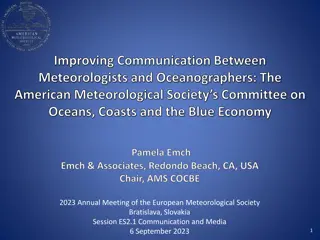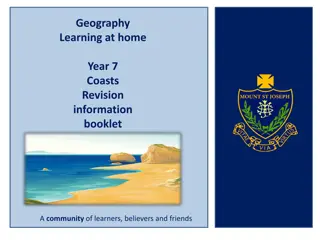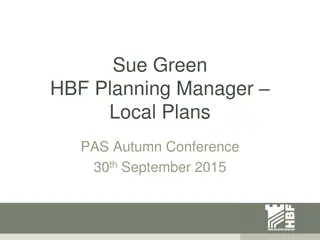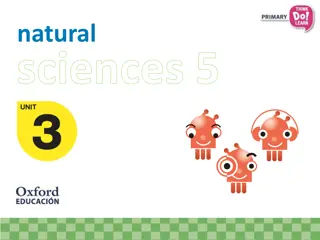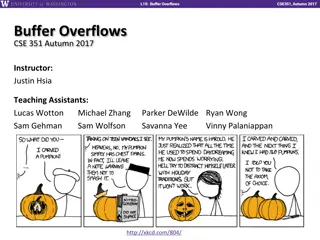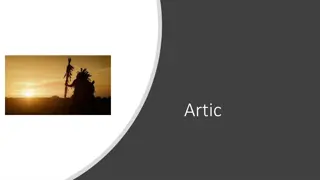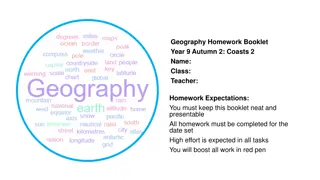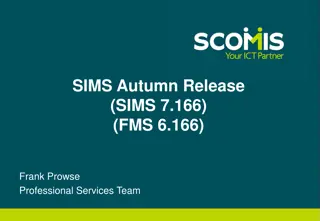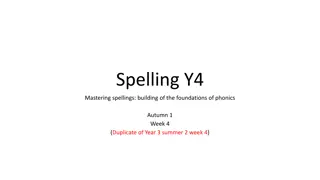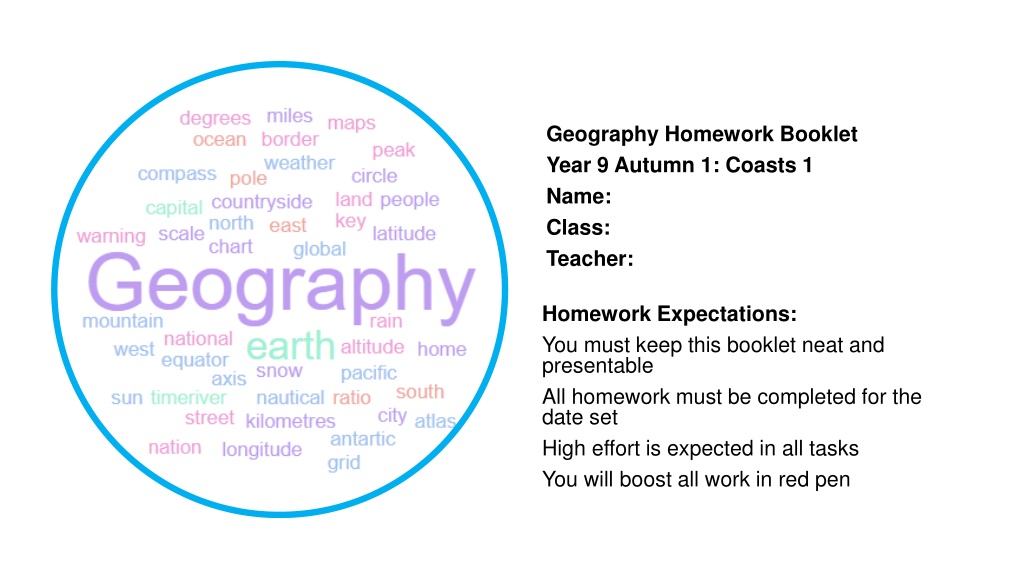
Exploring Coastal Geography in Year 9 Homework Booklet
This homework booklet for Year 9 students covers various aspects of coastal geography, including waves, landforms of erosion, and mass movement. Students are expected to complete assignments on key terms, diagram interpretations, and real-world examples related to coastal processes. High effort and neat presentation are encouraged as students delve into the fascinating world of coasts.
Download Presentation

Please find below an Image/Link to download the presentation.
The content on the website is provided AS IS for your information and personal use only. It may not be sold, licensed, or shared on other websites without obtaining consent from the author. If you encounter any issues during the download, it is possible that the publisher has removed the file from their server.
You are allowed to download the files provided on this website for personal or commercial use, subject to the condition that they are used lawfully. All files are the property of their respective owners.
The content on the website is provided AS IS for your information and personal use only. It may not be sold, licensed, or shared on other websites without obtaining consent from the author.
E N D
Presentation Transcript
Geography Homework Booklet Year 9 Autumn 1: Coasts 1 Name: Class: Teacher: Homework Expectations: You must keep this booklet neat and presentable All homework must be completed for the date set High effort is expected in all tasks You will boost all work in red pen
Year 9 Weekly Homework Autumn 1.1 Waves KB: page 4 1. Fill in the key terms and definitions for the following: 2. Study the diagrams on P4. Draw and label the two wave diagrams. Key Term Definition Constructive Wave Destructive Wave Constructive Wave Destructive Wave The forward motion of waves up a beach. 3. Tick the correct box for which the following statements are true: Backwash Statement Constructive Wave DestructiveWave Has a strongswash and a weak backwash Fetch Has a low wave height Are more common in the winter How often the waves occur. Low frequency = 6-8 waves per minute High frequency = 10-14 waves per minute Are low frequency waves (between 6-8 per minute) Wave Peak Have a circular wave orbit Removes material from beaches The lowest point of the wave, occurs between two peaks. These are low energy waves
Year 9 Weekly Homework Autumn 1.2 Landforms of Erosion Knowledge Book: Page 3. Draw a diagram, then explain the formation of caves, arches, stacks & stumps: 1. Fill in the key terms and definitions for the following: Key Term Definition Hydraulic Action Waves smash rocks together, bits of them break off causing the rock to be come smaller and rounder. Abrasion Solution 2. Which landform is being described? _____________________________________________ _____________________________________________ _____________________________________________ _____________________________________________ _____________________________________________ _____________________________________________ _____________________________________________ _____________________________________________ _____________________________________________ _____________________________________________ _____________________________________________ a) Alternating bands of hard rock and soft rock. __________________________________ b) Hydraulic action creates a wave-cut notch in the cliff. ___________________________ c) Bays are formed in areas of soft rock. ________________________________________ d) Sub-aerial processes attack the top of the archway. _____________________________ e) The backwash carries the fallen rubble back out to sea. __________________________ f) A real-world example is Old Harry Rocks . _____________________________________ g) This landform causes the cliff to retreat overtime. ______________________________ h) Erosion and weathering leave behind a tall column of rock. _______________________
Year 9 Weekly Homework Autumn 1.3 Mass Movement Knowledge Book: Page TASK 1: Use your knowledge organisers to complete the description and diagram columns for the 4 types of mass movement. TASK 2a: Create a mind map of the human and physical factors that could affect the speed of mass movement. Mass Description Diagram Real World Example TASK 2b: Colour code your factors into human and physical factors. Movement Rockfall White Cliffs of Dover, Kent Coastline Steepness of the slope. A steeper slope will increase the speed of mass movement. Landslide Wroxham Crag, Norfolk Coastline Factors Affecting the Speed of Mass Movement Mudflow Lyme Regis, Jurassic Coast in Dorset Rotational Slumping Mappleton, Holderness Coastline in East Yorkshire
Year 9 Weekly Homework Autumn 1.4 Sub-Ariel Weathering and Mass Movement Knowledge Book: P 3. Make links between words along the line you draw explain at least 4 links: 1a. Define the following key terms: Sub-Ariel Weathering- _________________________________________________________ Landslide Slumping Freeze-Thaw ____________________________________________________________________________ Mass Movement- _____________________________________________________________ ____________________________________________________________________________ 1b. Draw and icon to help you remember weathering and mass-movement : Saturated Biological Weathering Animals burrowing dislodges rocks causing a rock fall. Rockfall Mudslide Sub-Ariel Weathering Mass Movement 4. Draw the diagram for slumping and annotate it with the following labels: Soft rock Curved slide plane Slumped sediment 2. Which type of sub-ariel weathering is being described? Sub-ariel weathering Marine erosion a) Animals burrowing into the cliff face. __________________________________________ b) Acidic rain dissolves certain rock types. _________________________________________ c) Water gets into cracks, freezes and pushes the rock apart. _________________________ d) Minerals in rocks react with oxygen and start to breakdown. ________________________ e) Plant roots grow into cracks and push them apart. ________________________________ f) Rocks shrink and expand when they become wet and then dry out. __________________ g) Salt water gets into cracks. Water evaporates and leaves salt behind. _________________
Year 9 Weekly Homework Autumn 1.5 Transportation Knowledge Book 11-15 3. Draw the longshore drift diagram, label it, then explain how sediment moves along the coast: 1. Define the following key terms, then draw an icon to help you remember: Key Term Definition Icon Traction Saltation Suspension Solution _____________________________________________ _____________________________________________ _____________________________________________ _____________________________________________ _____________________________________________ _____________________________________________ _____________________________________________ _____________________________________________ _____________________________________________ _____________________________________________ _____________________________________________ 2a. Define the following key terms: Longshore Drift - _____________________________________________________________ ____________________________________________________________________________ Transportation - ______________________________________________________________ ____________________________________________________________________________ 2b. Correctly use the word saltation in a sentence: ________________________________ ____________________________________________________________________________ ____________________________________________________________________________ ____________________________________________________________________________
Year 9 Weekly Homework Autumn 1.6 Landforms of Deposition Knowledge Book 11-15 3. Draw the diagram for a spit , then explain how they form: 1. Define the following key terms and write out the definitions: Key Term Definition Sediment Mudflat An area of coastal grassland that is regularly flooded by seawater. Lagoon _____________________________________________ _____________________________________________ _____________________________________________ _____________________________________________ _____________________________________________ _____________________________________________ _____________________________________________ _____________________________________________ _____________________________________________ _____________________________________________ _____________________________________________ 2. Which type of depositional landform is being described? a) These are found between the high and low water mark. ___________________________ b) A lagoon forms behind this landform. __________________________________________ c) Form where the coast suddenly changes direction. _______________________________ d) Strong winds curve the end of this landform. ____________________________________ e) This landform joins together two headlands. ____________________________________ f) Constructive waves deposit material to create this landform. _______________________
Questions to ask: ___________________________ ___________________________ ___________________________ ___________________________ ___________________________ ___________________________ ___________________________ ___________________________ ___________________________ ___________________________ ___________________________ ___________________________ ___________________________ ___________________________ ___________________________ ___________________________ ___________________________ Notes: ___________________________ ___________________________ ___________________________ ___________________________ ___________________________ ___________________________ ___________________________ ___________________________ ___________________________ ___________________________ ___________________________ ___________________________ ___________________________ ___________________________ ___________________________ ___________________________ ___________________________
Questions to ask: ___________________________ ___________________________ ___________________________ ___________________________ ___________________________ ___________________________ ___________________________ ___________________________ ___________________________ ___________________________ ___________________________ ___________________________ ___________________________ ___________________________ ___________________________ ___________________________ ___________________________ Notes: ___________________________ ___________________________ ___________________________ ___________________________ ___________________________ ___________________________ ___________________________ ___________________________ ___________________________ ___________________________ ___________________________ ___________________________ ___________________________ ___________________________ ___________________________ ___________________________ ___________________________
Questions to ask: ___________________________ ___________________________ ___________________________ ___________________________ ___________________________ ___________________________ ___________________________ ___________________________ ___________________________ ___________________________ ___________________________ ___________________________ ___________________________ ___________________________ ___________________________ ___________________________ ___________________________ Notes: ___________________________ ___________________________ ___________________________ ___________________________ ___________________________ ___________________________ ___________________________ ___________________________ ___________________________ ___________________________ ___________________________ ___________________________ ___________________________ ___________________________ ___________________________ ___________________________ ___________________________
Questions to ask: ___________________________ ___________________________ ___________________________ ___________________________ ___________________________ ___________________________ ___________________________ ___________________________ ___________________________ ___________________________ ___________________________ ___________________________ ___________________________ ___________________________ ___________________________ ___________________________ ___________________________ Notes: ___________________________ ___________________________ ___________________________ ___________________________ ___________________________ ___________________________ ___________________________ ___________________________ ___________________________ ___________________________ ___________________________ ___________________________ ___________________________ ___________________________ ___________________________ ___________________________ ___________________________



